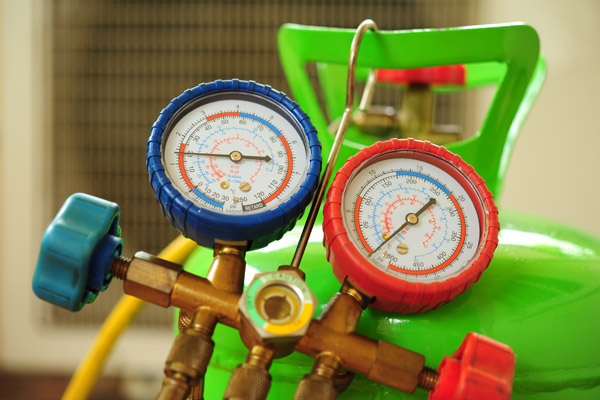2017 News
What to do when R-22 disappears

The most common refrigerant used for commercial and industrial HVAC systems – called R-22 – will soon go away. The impact will be felt by businesses and homeowners for many years to come. How will it affect you? How can you prepare? Read on.
What’s Wrong with R-22?
R-22 contains chlorine, which has been attributed to the greenhouse gas emissions believed to damage to the Earth’s ozone layer, which contributes to global warming. Therefore, R-22 and other chlorine-containing refrigerants are being phased out.
Come January 2020, there will be no new production of R-22 – or any other refrigerant containing R-22 in its blend. This includes medium- and low-temperature applications such as HP-80, 408A, 409A and MP39.
Will It Impact You?
Ryan English, Baker Group’s Service Operations Manager, says, “As the R-22 supply dwindles, its price will continue to skyrocket. As of today, R-22 sells at up to about $78.00 per pound – and is expected to increase in price as demand increases and supply diminishes. This will make it economically challenging for many businesses and homeowners to maintain HVAC systems that use R-22.”
- Commercial & Industrial Facilities. R-22 commercial and industrial HVAC systems have not been produced for about 10 years, meaning most systems that have been upgraded or replaced during that time won’t be impacted. “However, there are many HVAC systems that still use R-22 that are past or approaching the end of their useful life. Now’s the time for facility managers with those systems to plan how they will respond,” English advises.
- Residential Systems. R-22 residential systems have not been produced for the past 10 to 12 years. Up until three years ago, you could still purchase an uncharged (dry) unit instead of an entire system upgrade. This means many residences may still have dry R-22 systems. “It may be challenging for many homeowners to budget for a system upgrade or replacement, but the cost of R-22 will become extremely prohibitive as well,” English says.
Your Options
If your business or home is among those still using R-22 or R-22 blends, Baker Group recommends:
Best Option – If your HVAC system is more than 15 years old, start planning to upgrade or replace it with one using a new refrigerant. English says, “Over the long-term, this is the most cost-effective option. We feel it is not cost-effective to continue to spend money on an outdated system that uses a refrigerant that is no longer produced.”
Second-Best Option – If your HVAC system is running well, plan to upgrade it in the next year or so. HOWEVER, if in the meantime it develops a leak and the charge is lost, you can buy some time by converting the system to use M099 (R438A) refrigerant. M099 most closely matches the R-22 refrigerant with a loss of system capacity of roughly 5-7 percent.
In most cases, this conversion only requires changing the drier change and monitor system, and then documenting the new operating conditions. (If the system is marginal on capacity, this may not be a good option.)
“Because the repair involves replacing the filter drier and evacuating the system, it provides the option of recharging it using 10-lb. R-22 for roughly $780.00 or with MO99 for just $240.00 and only slightly higher labor costs,” English says.
Least Desirable Option - Continue with the R-22 system and hope that you can source recycled R-22 for use going forward.
The Final EPA RegulationsEPA Section 608 for Stationary Refrigeration and Air Conditioning mandates that facilities owners keep refrigerant records and documentation of leak testing based on system size:
- Leak rate thresholds
- Lower from 35% to 30% for industrial processes
- Lower from 35% to 20% for commercial refrigeration equipment
- Lower from 15% to 10% for comfort cooling equipment
- Leak inspections or continuous monitoring
- Required annually for 50+ lb. systems
- Required quarterly for 500+ lb. systems
- Owners/operators must submit reports to EPA if 50+ lb. systems lead ³125% of their full charge in one calendar year.
- Recordkeeping of recovered refrigerant during system disposal from 5-50 lb. systems.
- Extension of Refrigerant Management Program to cover substitute refrigerants, such as HFCs.
Please feel free to call Baker Group at 855.262.4000 if you have any questions or concerns.
About Baker Group
Founded in 1963 and with more than 500 employees across Iowa, Baker Group is the Midwest’s premier full-service specialty contractor providing mechanical, sheet metal, electrical, building automation, process automation, security systems, fire alarm systems, parking/revenue controls and 24/7/365 service.

